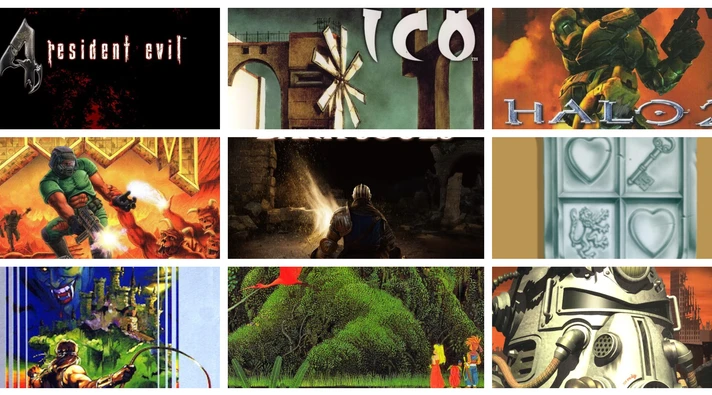From Blockbuster Browsing to Digital Downloads
The box art for video games is nowhere near what it used to be, and I’m wondering if it will just fade away from even being an option in the future. For the past several years, physical media in the U.S. alone has been declining dramatically. By 2013, digital game sales had started to edge past physical sales in the US, and by 2018, physical sales accounted for only 17% of all game sales in the country. Major publishers like Capcom now report staggering numbers: 90% digital copy sales versus only 10% on disc or cartridge. This decline is mainly due to downloading games becoming easier with digital stores like Steam or Epic, while even Sony and Xbox have ways to download all games on the console, focusing more on having larger hard drives to store more games over the years.
The current data paints an even starker picture. Over the past 25 years, spending on physical game disks in the US has decreased by over 85% from its peak in 2008, with 89.5% of games sold in 2022 being digital downloads.
The Convenience Factor vs. Nostalgia
The reason behind it makes perfect sense: it is convenient. No need to worry about physical storage; if you want to play it, you just sign into your account from anywhere and you can play it if you have the right equipment. Maybe this is just a generational thing, but I do miss the physical aspect of holding it in your hands. I’m forty and while I’m not necessarily old, I am a bit in gaming years. I’ve watched the transition happening and when I was younger, I used to question “collectors” for any form of media. Why does it need to be perfect? Why do you care if you lose the box it came in? Digital is much easier, right? As time passed, nostalgia started to kick in. When you are young, you never see it, but as you get older, being able to hold something and feel the memories flood in hits differently than when you see it on a screen.
I remember going to Blockbuster or Hollywood Video and just being interested in the game based on what I saw on the box art. From there, I could turn it around and get all the information I needed to see if it was something I wanted to try and rent. There were even manuals that talked more about the story and characters of the game while telling you how to play it.
The browsing experience itself has fundamentally changed. Walking through aisles, picking up boxes, and being surprised by cover art that catches your eye is a discovery process that digital storefronts haven’t fully replicated.
Algorithms might show us “games you might like,” but they can’t recreate that moment of stumbling upon something unexpected while browsing physical shelves.
When Box Art Was a Legitimate Art Form Box art was once a legitimate art form with recognized artists. Talented illustrators like Marc Ericksen created iconic imagery that defined how we perceived games before we even played them. Marc William Ericksen is a California-based American illustrator responsible for creating the art for over 90 video game boxes, working with some of the biggest names in the gaming industry, including Atari, Broderbund, Capcom, Data East, Hudson Soft, Koei, Sega, and Tengen. Roger Dean, famous cover artist of albums by Yes and Asia, designed the company logo and covers for Psygnosis games. These artists, including Julie Bell, left an indelible mark on the industry with sumptuous pieces of original art that now command high prices in the collectors’ market.
"First, the manuals lost their color, then the number of pages was reduced, and eventually, they disappeared altogether. Packaging underwent changes due to environmental regulations, and disc printing became increasingly poor."
Then the manuals started to get smaller, with no more color and fewer pages, and soon just disappeared. The degradation process has been steady and merciless. The big box art also shrunk, and packaging was said to be an environmental issue, so that was being changed as well. Paper thin and just a simple cover on top.
A Personal Connection to Gaming History
The reason why I’ve been thinking about this more was due to a storage box I found in my basement. It had old games like Chrono Trigger, Xenogears, Resident Evil, and many others that are considered classics now. While my memories may be somewhat distorted, since nothing we remember is ever perfect, I know the feelings I have for all these are pleasant.
I’ve wondered if others in the future my age right now will have that same feeling or ever stumble upon it.
Unless you are outright looking for it, you may never come across it on the internet with billions of pieces of information flying around. My basement though, that box, was just my memories and mine alone.
The Vinyl Model
Now, I don’t believe that physical copies of games will just go away completely. I look at it more like vinyl, which I am also a fan of (ha) with music. Yeah, I like Spotify, because I can easily access all the music I like while I’m driving or walking somewhere. However, buying albums I find to be almost perfect to me is different. I like the feel of them, the art all around it inside and out, and putting it on my vinyl player and hearing it come on is just different to me.
The comparison to vinyl is particularly apt. Vinyl records accounted for \(232.1 million of music sales in the first half of 2020, compared to CDs, which brought in only \)129.9 million. In 2021, for the first time in the last 30 years, vinyl record sales exceeded CD sales; one of every 3 albums sold in the US was a vinyl LP. This demonstrates how a seemingly obsolete physical format can not only survive but thrive as a premium, collectible product.
Physical packaging offers something digital formats simply cannot replicate – a tangible connection to the game. For many of us, the ritual of unwrapping a new game, leafing through the instruction manual, and admiring box art adds to the overall gaming experience. It gives a physical presence to our collections that represent personal interests and memories.
Industry Predictions and the Collector’s Market
Industry watchers predict “the apocalypse of the physical format in video games” could happen within the next 5 years. However, there’s hope in how the model might evolve. Just as vinyl records generate more revenue than CDs in today’s music industry, video game companies might start releasing special physical editions as premium products for collectors.
We’re already seeing this trend with limited edition releases featuring elaborate packaging and additional content such as art books, figures, or exclusive in-game items that are highly sought after by collectors:
Companies like Limited Run Games and Special Reserve Games have built entire business models around creating physical editions of digital-only games.
Limited Run Games is the industry-leading publisher and distributor of award winning collector’s editions, rare video games, and merchandise, with each game being “officially licensed, highly collectable, and only printed once.”
These collector’s editions often sell out within hours and command premium prices on secondary markets. Major publishers are increasingly releasing special physical versions alongside digital launches.
The shift away from physical media isn’t just about convenience—environmental concerns have also played a role in the gaming industry’s move toward digital distribution.
The Environmental Factor
The gaming industry has faced increasing pressure to reduce packaging waste, leading to thinner cases, smaller manuals, and eventually their elimination entirely. However, critics argue that the environmental impact of digital distribution through energy-intensive data centers may not be as green as initially thought.
The Irreplaceable Value of Physical Media
The digital revolution has changed how we interact with games, but it hasn’t erased what those physical items meant to a generation of players. Those boxes, manuals, and discs weren’t just containers, they were part of the ritual, the anticipation, the full experience of gaming. While tomorrow’s players may never know the thrill of opening a game box or flipping through a colorful manual, perhaps they’ll create their own meaningful connections to games through something different.
For now, I’ll keep my box of memories safely stored downstairs, a physical time capsule of gaming history that means something more than just data on a server somewhere. In this increasingly digital world, those tangible pieces of gaming history have become unexpectedly precious not just as collectibles, but as anchors to the experiences that shaped us.

